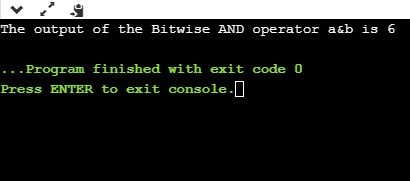C Programming Language
C language Tutorial with programming approach for beginners and professionals, helps you to understand the C language tutorial easily. Our C tutorial explains each topic with programs.
The C Language is developed by Dennis Ritchie for creating system applications that directly interact with the hardware devices such as drivers, kernels, etc.
C programming is considered as the base for other programming languages, that is why it is known as mother language.
It can be defined by the following ways:
- Mother language
- System programming language
- Procedure-oriented programming language
- Structured programming language
- Mid-level programming language
1) C as a mother language
C language is considered as the mother language of all the modern programming languages because most of the compilers, JVMs, Kernels, etc. are written in C language, and most of the programming languages follow C syntax, for example, C++, Java, C#, etc.
It provides the core concepts like the array, strings, functions, file handling, etc. that are being used in many languages like C++, Java, C#, etc.
2) C as a system programming language
A system programming language is used to create system software. C language is a system programming language because it can be used to do low-level programming (for example driver and kernel). It is generally used to create hardware devices, OS, drivers, kernels, etc. For example, Linux kernel is written in C.
It can't be used for internet programming like Java, .Net, PHP, etc.
3) C as a procedural language
A procedure is known as a function, method, routine, subroutine, etc. A procedural language specifies a series of steps for the program to solve the problem.
A procedural language breaks the program into functions, data structures, etc.
C is a procedural language. In C, variables and function prototypes must be declared before being used.
4) C as a structured programming language
A structured programming language is a subset of the procedural language. Structure means to break a program into parts or blocks so that it may be easy to understand.
In the C language, we break the program into parts using functions. It makes the program easier to understand and modify.
5) C as a mid-level programming language
C is considered as a middle-level language because it supports the feature of both low-level and high-level languages. C language program is converted into assembly code, it supports pointer arithmetic (low-level), but it is machine independent (a feature of high-level).
A Low-level language is specific to one machine, i.e., machine dependent. It is machine dependent, fast to run. But it is not easy to understand.
A High-Level language is not specific to one machine, i.e., machine independent. It is easy to understand.
C Program
In this tutorial, all C programs are given with C compiler so that you can quickly change the C program code.
File: main.c
- #include <stdio.h>
- int main() {
- printf("Hello C Programming\n");
- return 0;
- }
C is the widely used language. It provides many features that are given below.
- Simple
- Machine Independent or Portable
- Mid-level programming language
- structured programming language
- Rich Library
- Memory Management
- Fast Speed
- Pointers
- Recursion
- Extensible
1) Simple
C is a simple language in the sense that it provides a structured approach (to break the problem into parts), the rich set of library functions, data types, etc.
2) Machine Independent or Portable
Unlike assembly language, c programs can be executed on different machines with some machine specific changes. Therefore, C is a machine independent language
3) Mid-level programming language
Although, C is intended to do low-level programming. It is used to develop system applications such as kernel, driver, etc. It also supports the features of a high-level language. That is why it is known as mid-level language.
4) Structured programming language
C is a structured programming language in the sense that we can break the program into parts using functions. So, it is easy to understand and modify. Functions also provide code reusability.
5) Rich Library
C provides a lot of inbuilt functions that make the development fast.
6) Memory Management
It supports the feature of dynamic memory allocation. In C language, we can free the allocated memory at any time by calling the free() function.
7) Speed
The compilation and execution time of C language is fast since there are lesser inbuilt functions and hence the lesser overhead.
8) Pointer
C provides the feature of pointers. We can directly interact with the memory by using the pointers. We can use pointers for memory, structures, functions, array, etc.
9) Recursion
In C, we can call the function within the function. It provides code reusability for every function. Recursion enables us to use the approach of backtracking.
10) Extensible
C language is extensible because it can easily adopt new features





0 comments:
Post a Comment